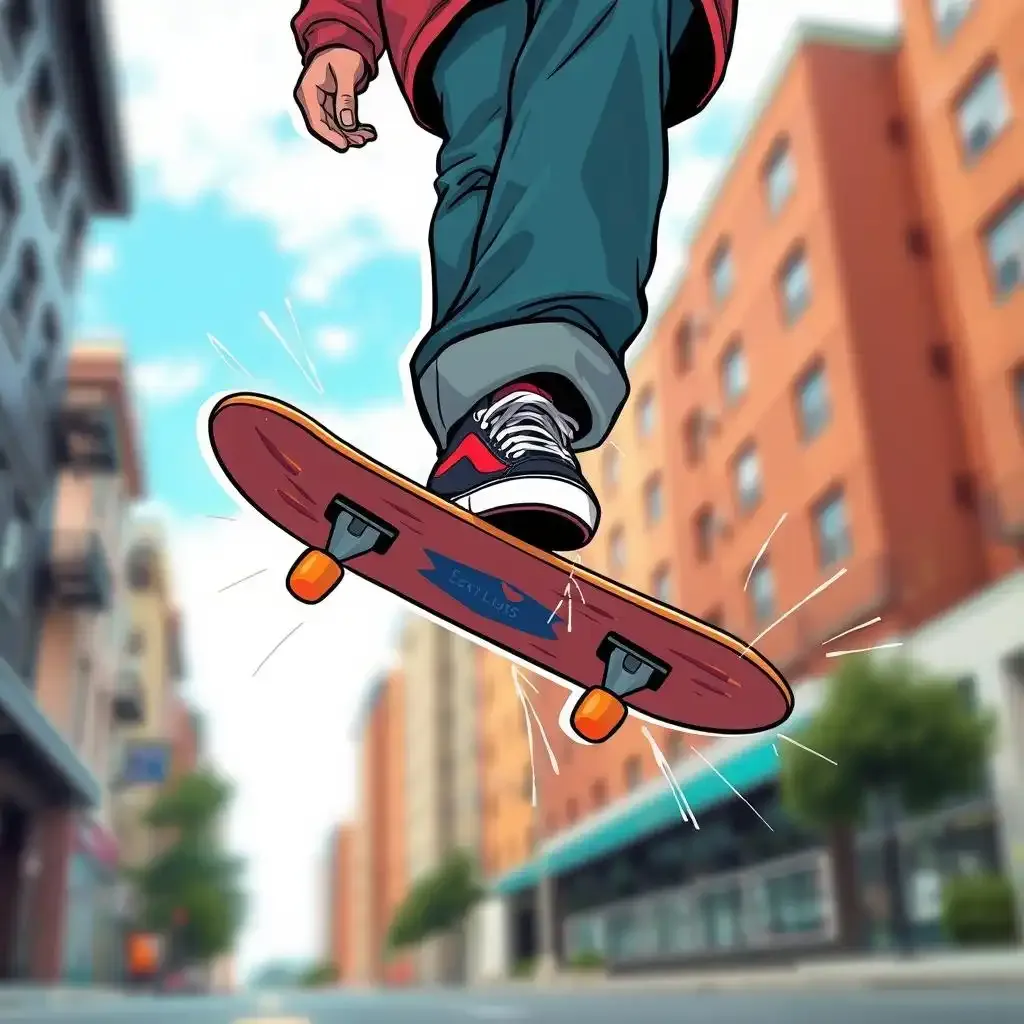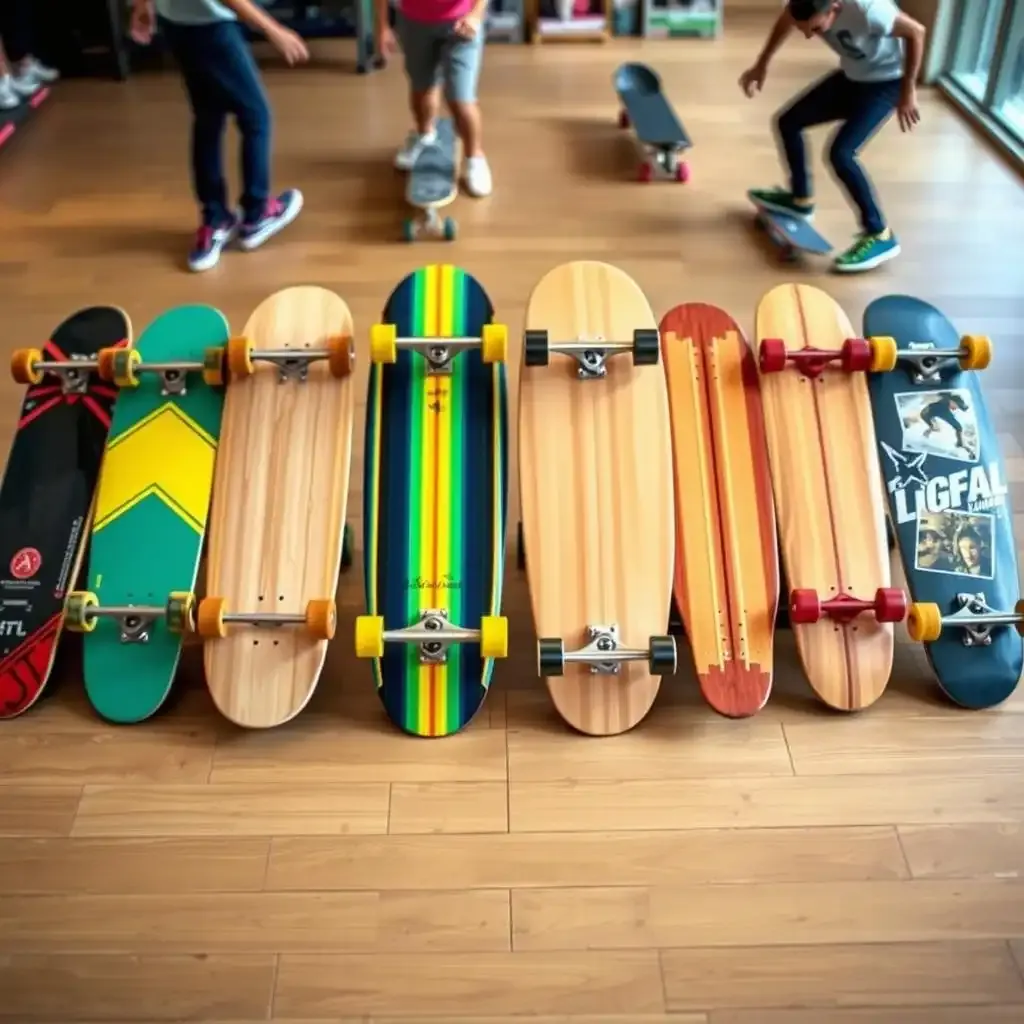Table of Contents
Thinking about hopping on a skateboard? Cool. But before you do an ollie into the unknown, let's talk about something important: do skateboards have a weight limit? It's a question many beginners (and even some experienced riders) wonder about. While there isn't a big flashing number stamped on every board, the answer isn't a simple yes or no. Think of it like this: can a bicycle carry a car? Definitely not. But can it carry a person? Absolutely. Skateboards are similar. They're built to handle a certain amount of pressure, and understanding those limits is key to a safe and fun ride. This article will break down the ins and outs of skateboard weight limits, so you can choose the right board and avoid any unexpected cracks or wobbles.
Key Point | Details |
|---|---|
Official Weight Limit | None officially stated for all skateboards. |
Factors Affecting Limit | Quality of deck, trucks, and wheels. Type of skateboard (longboard vs. shortboard). |
Typical Deck Limit | A good maple deck might handle around 220 lbs, but improper landings can cause breakage. |
Truck Limits | Some trucks have limits around 250 lbs. |
Wheel Limits | Quality wheels can often handle over 280 lbs. |
Longboard Advantage | Generally built to handle more weight than shortboards. |
Consequences of Exceeding Limit | Damage to the board (snapped deck, bent trucks), increased risk of accidents and injuries. |
Factors That Determine If Skateboards Have a Weight Limit
Factors That Determine If Skateboards Have A Weight Limit
Deck Material: The Backbone of Your Ride
Think of a skateboard deck like the spine of a superhero. It's gotta be strong enough to handle the action, right? Most good skateboards use maple wood, like from a sugar maple tree. It's pretty tough stuff! Imagine stacking a bunch of thin layers of this wood together and pressing them super hard – that’s how they make a deck. The better the quality of the maple and how well it's pressed, the more weight it can usually handle. It's like comparing a regular comic book to one made with extra-thick pages; one’s going to hold up a lot better. Landing a trick wrong is like a superhero taking a hard fall – even the best spine can only take so much impact. So, while a good maple deck might seem like it can handle a lot, even around 220 lbs, a bad landing can still snap it. It's not just about how much you weigh standing still; it's about the force when you land! Have you ever wondered, are skateboards dangerous? Well, the deck plays a big part in that.
Trucks and Wheels: The Supporting Cast
Now, let's talk about the trucks and wheels. These are like the superhero's legs and feet – they need to be sturdy to support everything. Trucks are those metal T-shaped things that hold your wheels. Some trucks actually have their own weight limits, maybe around 250 lbs. It's like a sign saying, "Hey, don't put too much pressure here!" Then you've got the wheels. Good quality wheels are like super-grippy shoes for your board. They can often handle even more weight than the deck, maybe over 280 lbs! Think of it like this: a tiny toy car with plastic wheels probably couldn't carry a brick, but a real car with strong tires can handle a whole lot. It's all about what they're made of and how they're built. Just like you need good shoes to run and jump, your skateboard needs good trucks and wheels to carry you. Speaking of good gear, you might be curious if skateboard trucks are universal. It's something to think about when you're setting up your board.
Component | What it Does | Impact on Weight Limit |
|---|---|---|
Deck (Maple) | Main platform you stand on | High-quality maple can handle more weight |
Trucks | Connect wheels to the deck, allow turning | Some have specific weight limits |
Wheels | Allow the board to roll | Good quality wheels can handle significant weight |
Understanding How Different Skateboards Have a Weight Limit
Understanding How Different Skateboards Have A Weight Limit
Longboards: The Gentle Giants of Skateboarding
Think of skateboards like different kinds of bikes. You've got your speedy race bikes, your mountain bikes for rough trails, and then you've got longboards. Longboards are like the comfy cruisers of the skateboard world. They're usually bigger and longer than your average skateboard, which is a big clue that they can often handle more weight. It's kind of like comparing a small car to a pickup truck; the truck is built to carry heavier loads, right? Because longboards are often made with more layers of that strong maple wood I mentioned earlier, or sometimes even different materials, they're generally tougher cookies when it comes to weight. So, if you're wondering if skateboards are vehicles, well, longboards are definitely more like the SUVs of the skateboard family!
Shortboards and Cruisers: Different Builds, Different Limits
Now, let's chat about the more common skateboards you see at the skatepark – shortboards. These are the go-to for doing tricks and flips. They're lighter and more agile, which is awesome for doing ollies, but they might not be as forgiving with weight as a longboard. Then there are cruisers. Imagine a shortboard and a longboard had a baby – that might be a cruiser! They're usually smaller than longboards but often have softer wheels for smoother rides. Think of it like shoes: you've got your running shoes for speed and your comfy sneakers for walking around. Cruisers are more for just getting around town. The way these boards are built, and the materials used, means their comfortable weight limit might be a bit lower than a longboard. It’s like how a racing bike is super light for speed, but you wouldn't load it up with groceries! Did you know you can even use some skate shoes for walking? Check out if skate shoes can be used for walking!
Freestyle Boards: Light and Nimble
Ever seen someone doing crazy spins and flips on a skateboard? They're probably riding a freestyle board! These boards are built to be super light and responsive. Imagine a ninja – they need to be quick and agile, not weighed down by heavy armor. Freestyle boards are similar. They're designed for technical tricks, and while they can still handle a decent amount of weight, the focus is more on being lightweight for easier maneuvering. It's like comparing a race car to a tank – both are strong, but one is built for speed and agility, and the other for ability and resilience. So, while a freestyle board might not be the best choice for someone on the heavier side, it's perfect for those who prioritize tricks and fancy footwork. Just like you need the right gear for different sports, knowing the type of board helps understand its limits. And if you're wondering if you can use your helmet for other activities, like if skateboard helmets can be used for snowboarding, it's always good to check the safety guidelines!
What Happens When You Exceed a Skateboard's Weight Limit?
Board Breakage: Snap, Crackle, Pop… Oh No!
Okay, so you're thinking about pushing your skateboard to its limits, huh? Imagine your skateboard is like a cookie. It looks pretty solid, right? But if you put too much pressure on it, what happens? Snap! The same thing can happen to your board. If you're way heavier than what your board is designed for, especially when you land a jump a little wonky, you might hear a scary cracking sound. That's not the sound of fun, my friend. It could mean your deck is about to split, kind of like when you try to bend a stick that's too thick. Nobody wants to be in that situation, trust me. It's like when you see those videos of people trying silly stunts, and you just know it's going to end badly. Plus, if your deck snaps, you're suddenly not on a skateboard anymore, and that usually leads to a not-so-fun landing. Ever wondered if ? Well, breaking your board definitely adds to the danger factor.
Ouch! Risks to the Rider
It's not just the skateboard that can get hurt when you ignore the weight limit; you can too! Think of it like this: if your board suddenly breaks, what's going to happen to you? You're going down! Maybe you'll just stumble and fall, but you could also twist an ankle, scrape your knees, or even worse. Imagine you're running super fast and then trip over your own feet – it's kinda like that, but with a broken skateboard involved. And it's not just about the deck snapping. If the trucks or wheels can't handle the weight, they could bend or break too. That could send you flying in unexpected directions. Wearing a helmet is always a good idea, even if you're not planning any crazy stunts. Seriously, can ? Maybe, but definitely wear one when you're skating!
Rolling to the Finish Line: Skateboard Weight Limits Explained
So, do skateboards have a weight limit? The answer is a nuanced "yes." It’s not an official number shouted from the rooftops, but more of a suggestion whispered by physics and good old common sense. Ignore it at your peril. While a sturdy board might seem invincible, pushing it beyond its intended limits is a recipe for disaster, both for the board and your bones. Pay attention to the quality of the components, consider the type of riding you'll be doing, and remember that a little caution goes a long way. Now get out there and shred, responsibly!